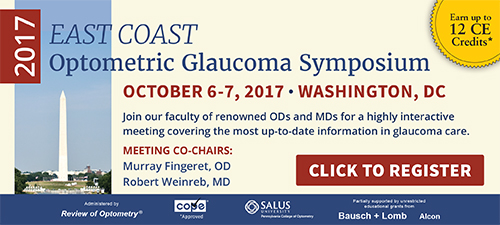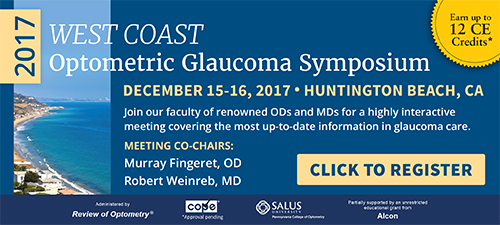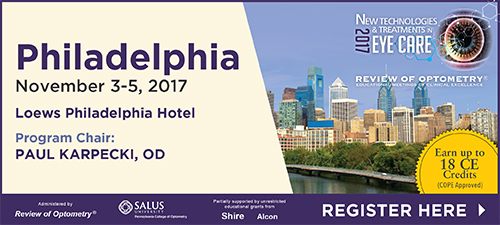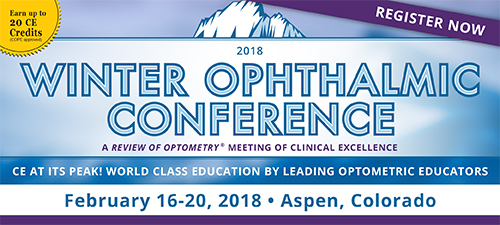
A
weekly e-journal by Art Epstein, OD, FAAO
Off the Cuff: Expo West…Wow!
I have attended just about every national optometry meeting for decades. Expo West usually stands as my favorite meeting of the year, but Expo West 2017 definitely stood out. There seemed to be more attendees and more positive buzz than any meeting since 9/11. And although I may be a bit biased, dry eye seemed to be the hottest topic at the meeting.
|
|||||
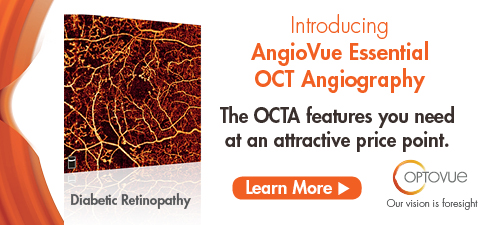 |
||
| Etiology of Acquired Blepharoptosis in Young Adults | ||||
This study identified the causes of blepharoptosis in young adults, and explored cases that did not fit into current diagnostic categories. The retrospective cohort study included all patients ages 18 to 40 years old (“young adults”) with acquired blepharoptosis that presented to two specialist ocular plastics practices and a pediatric ophthalmologist over a period of up to 25 years. Each patient was classified according to diagnosis. Where the diagnosis was uncertain, the files were examined in detail to try to establish a cause.
A total of 266 young adult patients were included. The most common causes of acquired blepharoptosis were trauma-related (28.2%) and anophthalmic blepharoptosis (19.9%). In 12.4% of the cases, a definite diagnosis could not be made. Of these, one-third had a history of soft contact lens use, a possible etiologic factor. The cause of acquired blepharoptosis could usually be established by an appropriate history and examination, with additional diagnostic tests sometimes required. Nearly half of all young adult ptosis was related to trauma or acquired anophthalmos. Around one in eight young adults had blepharoptosis of unknown cause, a group warranting further study, researchers wrote |
||||
SOURCE: Rasiah S, Hardy TG, Elder JE, et al. Aetiology of acquired blepharoptosis in young adults. Orbit. 2017; Sep 6:1-6. [Epub ahead of print]. |
||||
|
|||
| Feline-transmitted Staphylococcal Hyicus Endophthalmitis After Clear Lens Extraction | ||||
Postoperative endophthalmitis is a dreaded post-surgery complication that can lead to legal blindness, investigators wrote. In addition to typical risk factors, some minor episodes may also lead to the occurrence of endophthalmitis. The purpose of this study was to report a case of acute postoperative endophthalmitis caused by Staphylococcus hyicus in a patient with a contact history of felines. A 58-year-old Taiwanese female who had a history of contact with felines due to her occupation had received clear lens extraction surgery of the left eye on July 10, 2015. One day after the surgery, the best-corrected visual acuity (BCVA) of the left eye was 20/40, which rapidly deteriorated to light perception with hypopyon formation. She was admitted for acute postoperative endophthalmitis and received antibiotic therapy with topical levofloxacin instillation and intravitreal vancomycin plus amikacin injection. Trans pars plana vitrectomy (TPPV) was then performed one day after admission. The specimen obtained from the vitreous and anterior chambers yielded the growth of S. hyicus. The patient was discharged with BCVA measured by counting fingers. Another TPPV was arranged for the persistent vitreous opacity on October 20, 2015, and the BCVA recovered to 20/32 at the last visit. Investigators wrote that, to their knowledge, this was the first case of acute postoperative endophthalmitis caused by S. hyicus due to feline contact. They suggested that unusual pathogens in the environment and personal hygiene status should be validated preoperatively to prevent the development of postoperative endophthalmitis. |
||||
SOURCE: Chao SC, Lee CY, Nien CW, et al. Feline-transmitted Staphylococcal hyicus endophthalmitis after clear lens extraction: a case report. Int Med Case Rep J. 2017;10:279-83. |
||||
 |
||
| Effects of Intravitreal Anti-vascular Endothelial Growth Factor Injections on IOP | ||||
Authors wrote that the acute and chronic effects of repeated intravitreal anti-vascular endothelial growth factor (VEGF) injections on intraocular pressure (IOP) have not been fully characterized, and the development of sustained ocular hypertension could adversely affect patients at risk of glaucomatous optic neuropathy. As expected, volume-driven, acute ocular hypertension immediately follows intravitreal injection, but this pressure elevation is generally transient and well-tolerated, they added. Several medications have been investigated to limit acute ocular hypertension following anti-VEGF therapy, but the benefits of pretreatment are not conclusive, authors wrote.
Chronic, sustained ocular hypertension, distinct from the short-term acute ocular hypertension following each injection, has also been associated with repeated intravitreal anti-VEGF injections. Risk factors for chronic ocular hypertension include the total number of injections, a greater frequency of injection and pre-existing glaucoma. Proposed mechanisms for chronic ocular hypertension include microparticle obstruction, toxic or inflammatory effects on trabecular meshwork, as well as alterations in outflow facility by anti-VEGF agents. Although limiting anti-VEGF therapy could minimize the risk of both acute and chronic ocular hypertension, foregoing anti-VEGF therapy risks progression of various macular diseases with resulting permanent central vision loss. While definitive evidence of damage to the retinal nerve fiber layer is lacking, authors recommended that patients receiving repeated injections should be monitored for ocular hypertension, and those who subsequently develop sustained ocular hypertension should be periodically monitored for glaucomatous changes with an optic nerve optical coherence tomography (OCT) and static visual fields. |
||||
SOURCE: Bracha P, Moore NA, Ciulla TA, et al. The acute and chronic effects of intravitreal anti-vascular endothelial growth factor injections on intraocular pressure: A Review. Surv Ophthalmol. 2017; Sep 4. [Epub ahead of print]. |
||||

|
||
| News & Notes | |||||||||
| SECO 2019 Conference Moves to New Orleans SECO International announced that SECO will move the 2019 event to New Orleans, returning to Atlanta in 2020. This marks the first time SECO has held a meeting outside of Atlanta since 1957. SECO 2019 will take place February 20-24 at the New Orleans Ernest Morial Convention Center. As a result of the move, SECO is looking to recraft the show strategy to ensure that all aspects of the event are in line with best practices. Attendees will benefit from show enhancements, and competitive hotel selections and rates. SECO exhibitors will enjoy lower costs to exhibit.
|
|||||||||
Zeiss Unveils Ultra-wide Field Fundus Imaging Technology
|
|||||||||
| New Published Papers Demonstrate RightEye Reliability RightEye announced the recent publication of three new research papers in the journals Vision Development and Rehabilitation and Translational Vision Science and Technology. The articles, co-authored by RightEye co-founder and chief science officer, Melissa Hunfalvay, PHd, provide normative data, reliability and validity of RightEye dynamic visual acuity and fine depth perception tests, and show the validity of inter-pupillary distance and pupil diameter measures using an infrared eye tracker and central point stimuli. Read more. |
|||||||||
Douglas Benoit to Head Professional Affairs at Visioneering Technologies
|
|||||||||
| Genentech: Primary Endpoint in Spectri Not Met Genentech announced the primary endpoint was not met in Spectri, the first of two Phase III studies evaluating the safety and efficacy of lampalizumab, an investigational medicine for the treatment of geographic atrophy due to age-related macular degeneration. Lampalizumab didn’t reduce mean change in GA lesion area compared to sham treatment at one year (48 weeks). Given the lack of efficacy, further dosing will be interrupted until the results from the second Phase III study, Chroma, are evaluated, according to the company. The two Phase III trials are identically designed, double-masked, randomized, global studies evaluating the efficacy and safety of a 10 mg dose of lampalizumab administered every four or six weeks by intravitreal injection vs. sham injections in people with GA due to AMD. Read more.
|
|||||||||
Illuvien Available in Ireland for Chronic DME
|
|||||||||
Alcon Data: Patients Preferred Air Optix Plus HydraGlyde Contact Lenses
|
|||||||||
|
Optometric Physician™ (OP) newsletter is owned and published by Dr. Arthur Epstein. It is distributed by the Review Group, a Division of Jobson Medical Information LLC (JMI), 11 Campus Boulevard, Newtown Square, PA 19073. HOW TO ADVERTISE |





